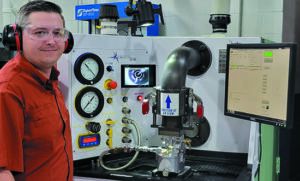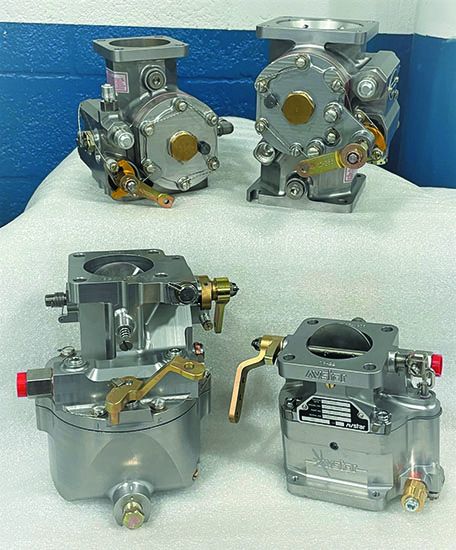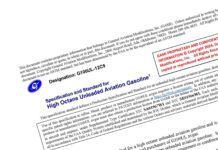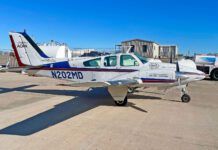It starts innocently enough—in your fixed-pitch prop single, climbing out on a warm, but not hot, summer day, the VSI points to a number even lower than the usual lethargic rate. Or, on a cold morning the engine monitor on your Bonanza is showing higher than normal CHTs. Have you got a problem up front or is what you’re experiencing just a normal effect of changing temperature?
Your first action on the fixed-pitch prop bird is to lean the mixture because the most likely problem is that it’s too rich on this high density altitude day. Doing so improves things dramatically. The RPM increases, as does the rate of climb. However, you’ve pulled the mixture knob out more than half of its travel.
Yes, the mixture is too rich—apparently by quite a bit.
Concerned now that you have a problem with fuel metering that could be serious, you reduce power, turn back toward the airport, enter the pattern and land. Turning off the runway, you taxi to a runup pad to do a full-power, static runup and see if the engine RPM falls within the range called for in the aircraft manual, in this case, 2270 to 2370 RPM with a full rich mixture. The most you can get is 2220—and you believe that your tach is accurate. Pulling the mixture control aft, the RPM increases and moves into the acceptable range with the knob two inches back from the panel.
Based on what you’ve seen, you decide that it’s time for a visit to the shop because you suspect that there’s a fuel system issue that is causing an overly rich mixture at full power.
In the Bonanza, you’ve got the advantage of an engine analyzer that is giving an indication that the mixture is too lean at high power—which could cause detonation.
NOW WHAT?
Let’s take a step back and look at the fuel systems and fuel metering, what can go wrong and how you can detect the nature of the problem so your shop can fix it efficiently.
Our spark-ignition engines in the general aviation aircraft we fly use a metering device to combine air and avgas into a combustible air-fuel charge that is swallowed by combustion chambers and ignited electrically. To burn, the air-fuel ratio must be between 8-1 and 18-1 by weight. The stoichiometric mixture—where all the fuel and oxygen is burned—is 15-1 by weight. Creating and maintaining a combustible charge “metering” as power and altitude change isn’t easy.
In a conversation with Chad Szwarnowicz, engineering manager of one of the biggest dogs in the fuel system manufacture and repair world, AVStar Fuel Systems (www.avstardirect.com)—supplier of 98 percent of Lycoming fuel systems—he explained that, simplified, what evolved to meter the air-fuel charge in our airplanes are carburetors and fuel injection servos. Almost all are mechanical. A carburetor and a fuel injection servo meter fuel based on airflow, adding the appropriate amount of fuel to be vaporized.
As the aircraft climbs the weight of the air in the airflow through the metering unit diminishes. Most units cannot fully compensate for this change, so the air-fuel mixture becomes increasingly rich.

IT’S DENSITY ALTITUDE

Engine power output is directly related to density altitude, not absolute altitude. How we’ll the engine breathes and the aircraft wing performs is based on density altitude—how far apart those air molecules are.
That’s also why you lean the mixture based on density altitude, not what the altimeter is telling you. Accordingly, when your POH calls for a full rich mixture when climbing below some altitude, usually 3000 feet, that’s density altitude—and, yes, we’re not happy that some aircraft manufacturers don’t make that clear. As an aside, the POH guidance for a full rich mixture below 3000 feet (density altitude) is only during climb. Once in cruise, at any altitude, the mixture should be leaned—your POH cruise performance charts specify a lean mixture, not full rich, at all altitudes.

THREAD THE NEEDLE
Variations in density altitude at your home airport, as shown by the chart above, can be dramatic—three of the above samples had density altitude vary more than 5000 feet between winter and summer.
Fuel system and engine manufacturers are aware of this and prescribe fuel flow curves for their metering systems seeking the sweet spot, so to speak, where the system will work we’ll throughout the year.
Szwarnowicz told us that “you always want your fuel system to be capable of giving you a mixture that is richer than best power, that way it is always there if you need it.”
Nevertheless, at high density altitudes taking off with a full rich mixture means power loss due to an overly rich mixture. That means on a takeoff from Scottsdale, Arizona, elevation 1510 feet, on a hot day, the density altitude is going to be we’ll above 3000 feet, so your rich mixture is not a sign of a misadjusted fuel metering system. However, that also means that on a cold day at Tampa, Florida, the density altitude is negative, so you are probably going to see higher CHTs in the climb because the mixture is leaner than it would be at sea level density altitude.
No matter what, the full power fuel flow at any given altitude should match the range specified in your POH or your aircraft’s maintenance manual.
KNOW YOUR AIRCRAFT
As you get to know your aircraft and how it behaves on takeoff, climb and cruise as density altitude changes, especially if you are downloading and reviewing engine data, you will get a feel for when you should be concerned about fuel metering. We’re a fan of Savvy Aviation’s (www.savvyaviation.com) SavvyAnalysis digital engine monitor data analysis service. The basic service on the platform is free. For $129 annually for a piston single, the owner gets analysis reports of submitted engine monitor data as we’ll as report cards and trend reports compared with similar aircraft.
With your knowledge of your aircraft, fuel flow and engine monitor data you and your shop can identify when there is a fuel metering issue and address it.
There are two main fuel systems in our airplanes, Continental and AVStar/Lycoming. Only Continental fuel injection systems are field-adjustable. Most carburetors and AVStar/Lycoming fuel injection systems are not field adjustable, other than idle mixture. When there is a problem, the unit has to be pulled and sent to a facility that can flow test and adjust the unit.
We note that engine expert Mike Busch, in his excellent, eponymous book, Mike Busch on Engines, states that with regard to Continental fuel injection systems, “It’s also a good idea to recheck the adjustments from time to time—every 500 hours or so—since they can gradually drift out of tolerance as the vanes and springs in the fuel pump get older.”
CONCLUSION
Going back to the two examples above, there’s a good chance that there is a metering issue with the fixed-pitch single and it’s time to see that it meets the manufacturer’s flow curves. The owner should work with her shop to have it pulled, flow tested and adjusted to make sure it meets the prescribed flow curves.





